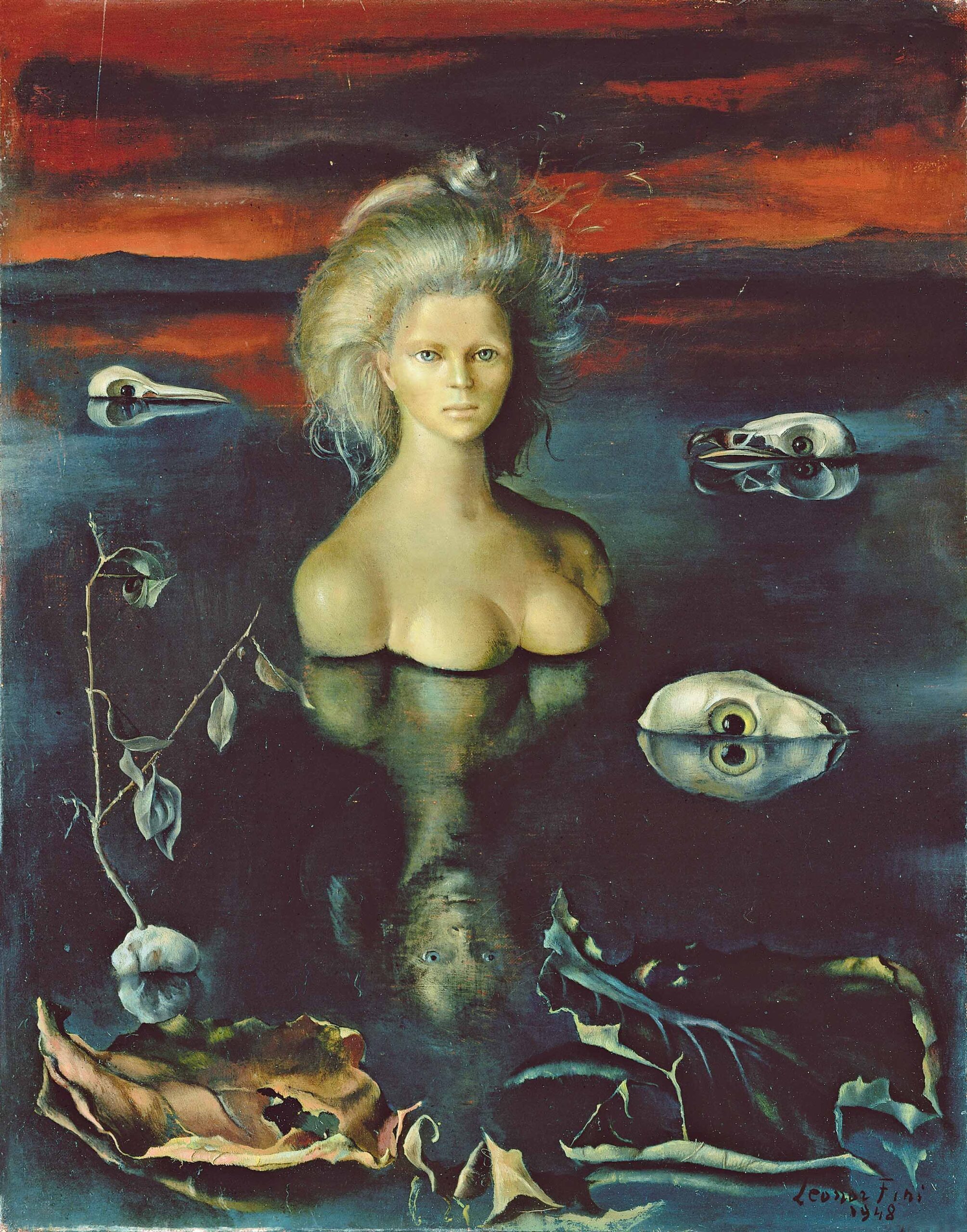
Perhaps entertainment
Leonor Fini, 1995, Oil on canvas, Private collection © Leonor Fini Estate, Paris.

Ends of the Earth
Leonor Fini, 1948, Oil on canvas, Private collection © Leonor Fini Estate, Paris.

Perhaps entertainment
Leonor Fini, 1995, Oil on canvas, Private collection © Leonor Fini Estate, Paris.

Ends of the Earth
Leonor Fini, 1948, Oil on canvas, Private collection © Leonor Fini Estate, Paris.
THE EDGE OF THE WORLD. A SCENT OF DEATH
The third section opens with the painting Le Bout du monde (1948), a pivotal work in Leonor Fini’s career that introduces the theme of the macabre and the menacing, both recurring throughout her oeuvre and revealing a “death drive” that permeates her entire existence. In the painting, Fini portrays herself submerged in water up to her torso in an apocalyptic setting, as the sole survivor, sovereign of a new world populated by gentle skulls animated by eyeballs. The exhibition features earlier works, such as La Racine aux coquilles d'œufs / Visage (1943) and L’Ange de l’anatomie (1949), where angelic and demonic elements coexist, juxtaposed with paintings from the last decades of her life, including Qui est-ce? (1991) and Peut-être un divertissement (1995). These latter works, through a play of shadows, absences, and presences, reveal a world inhabited by mourning and specters. The macabre atmospheres that characterize her paintings exemplify Fini’s exploration of the body and its decay over time. Her fascination with these themes is evident in some of her literary influences, such as Mario Praz’s The Romantic Agony and the poetry of Edgar Allan Poe, which imbue her work with a distinctly romantic and decadent character.
